Fueled by Bangladesh’s construction boom, the stone trade in Jaflong is brutalizing humans and nature alike.
“Once upon a time there was a blue river that flowed in Jaflong,” explains Probal Das, a local worker. We are just 56 kilometers away from Sylhet, in northeastern Bangladesh, at the foot of the beautiful Meghalaya hills on the Indo-Bangla border. Once known for its lush green hills and rolling tea gardens, Jaflong is now dying a slow death. During the monsoon, the crystal clear water of the once-blue Piyain river, which originates in the Himalayas, washes down precious rocks and pebbles from the Indian hills. So every day at the crack of dawn, laborers of all ages descend the river on hundreds of little black and grey boats, buckets and spades in hand.
They come by the thousands—the majority of them women and girls—to collect the stones and feed them to 250 gargantuan crushing machines that chew and churn out chips at the rate of nearly 1,000 trucks a day. In the peak winter season, there are 10,000 people working the quarry. “I have been collecting stones since I was 8,” says 15-year-old Shapna, clawing through the murky water. She fills at least five baskets a day for 40 cents each. Women typically don’t make more than $2 a day, while men can earn up to $5, doing a variety of jobs such as loading trucks and diving into the river to collect stones, explains another laborer.
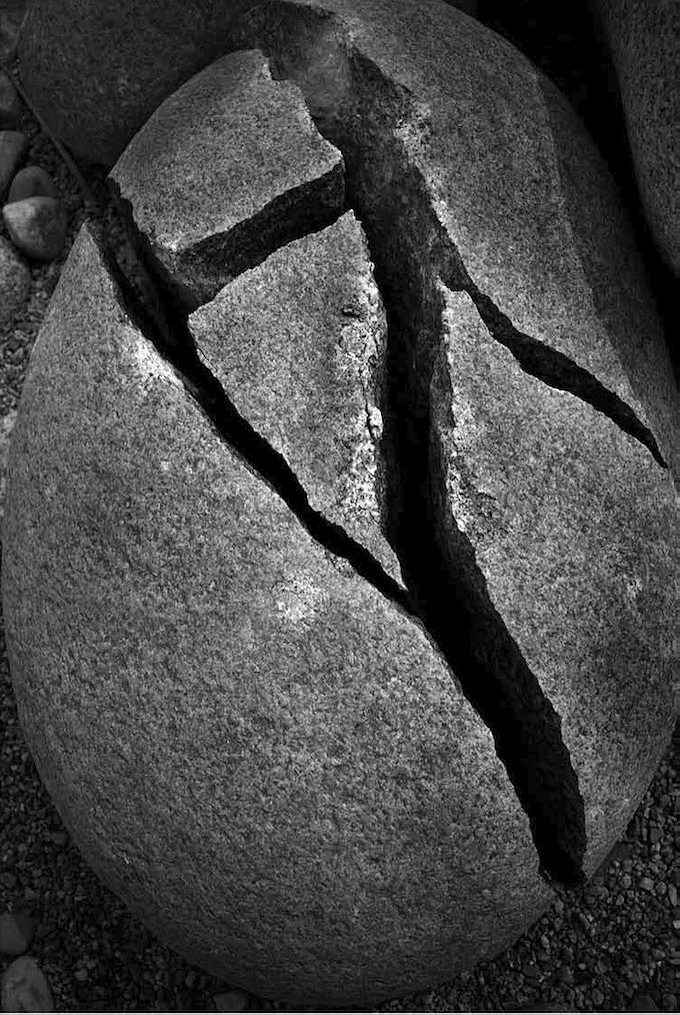
Poverty sends children into the industry at an early age. Many suffer from diarrhea due to the lack of sanitation and from heart problems because of the deafening sounds of the machines. But dismal living conditions and the absence of labor laws don’t deter the workers. “I can hardly afford food, so I always try to work a few extra hours,” said Alya Begum, a mother of two, standing knee-deep in water. A sick day is a hungry day. To scrape up enough to eat, people work shifts of 10 or 12 hours. Even five-year-olds search for rocks to earn $1.50 a day.
The stone rush has turned the riverbank into a giant, stinking, clanging labyrinth of towering crushers, cranes, bulldozers, fractured rocks, trucks, gaping craters, dunes, boats and shacks. Accelerated by the construction boom in Bangladesh, the trade has a geological limit; stones are collected at a feverish speed, triggering a gradual decrease in their availability. More and more laborers take the risk of invading the no-man’s land along the Indo-Bangla border, fueling squabbles between security forces from the two nations. According to a local farmer, it has become impossible to grow crops because the thick clouds of dust are destroying soil fertility, and the land around the river is rapidly eroding.
As hundreds continue to migrate to the area in search of jobs, salaries decrease. “Two years ago I earned at least $6 a day, now I earn $2,” said Rajia Begum, 48. She works seven days a week, 10 hours a day. At noon, Begum stops for a short lunch break. She squashes a hot green chili and meshes it with boiled rice, mustard oil, salt and eggplant puree. “Rest is a luxury,” she says, raising her voice to be heard above the grinding noise of industry.


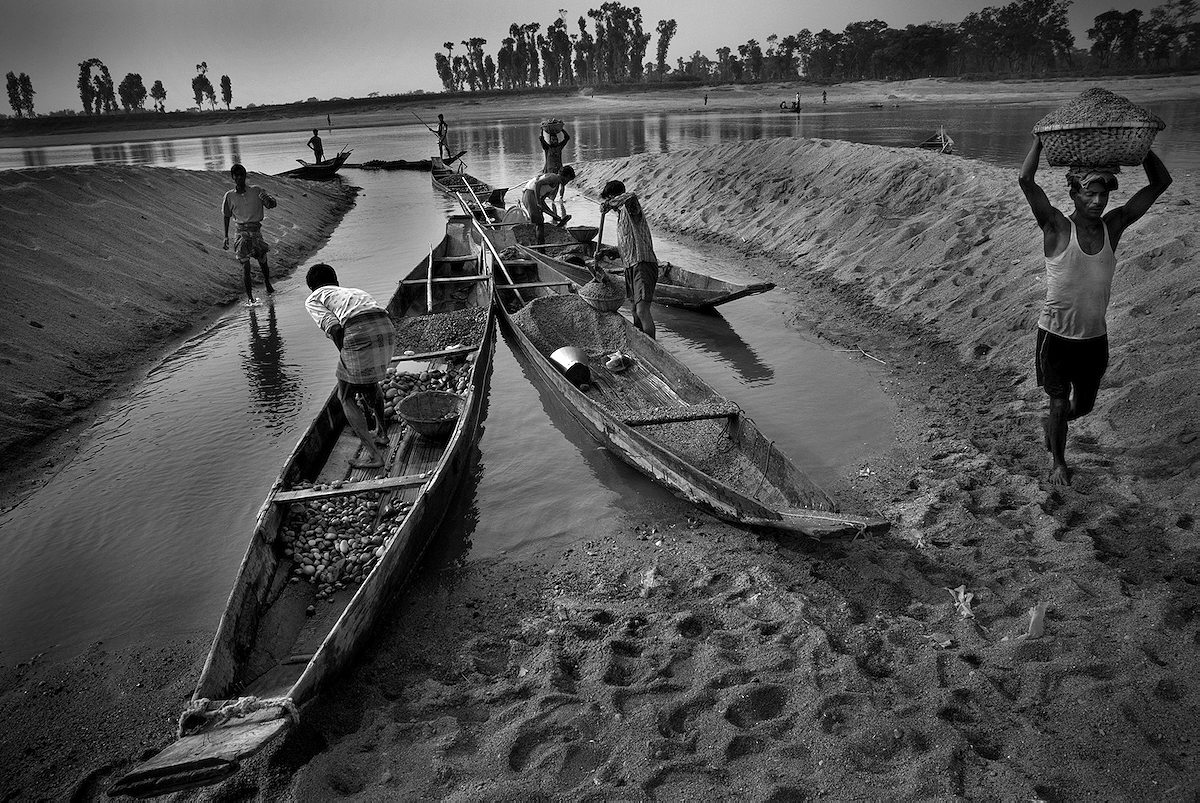
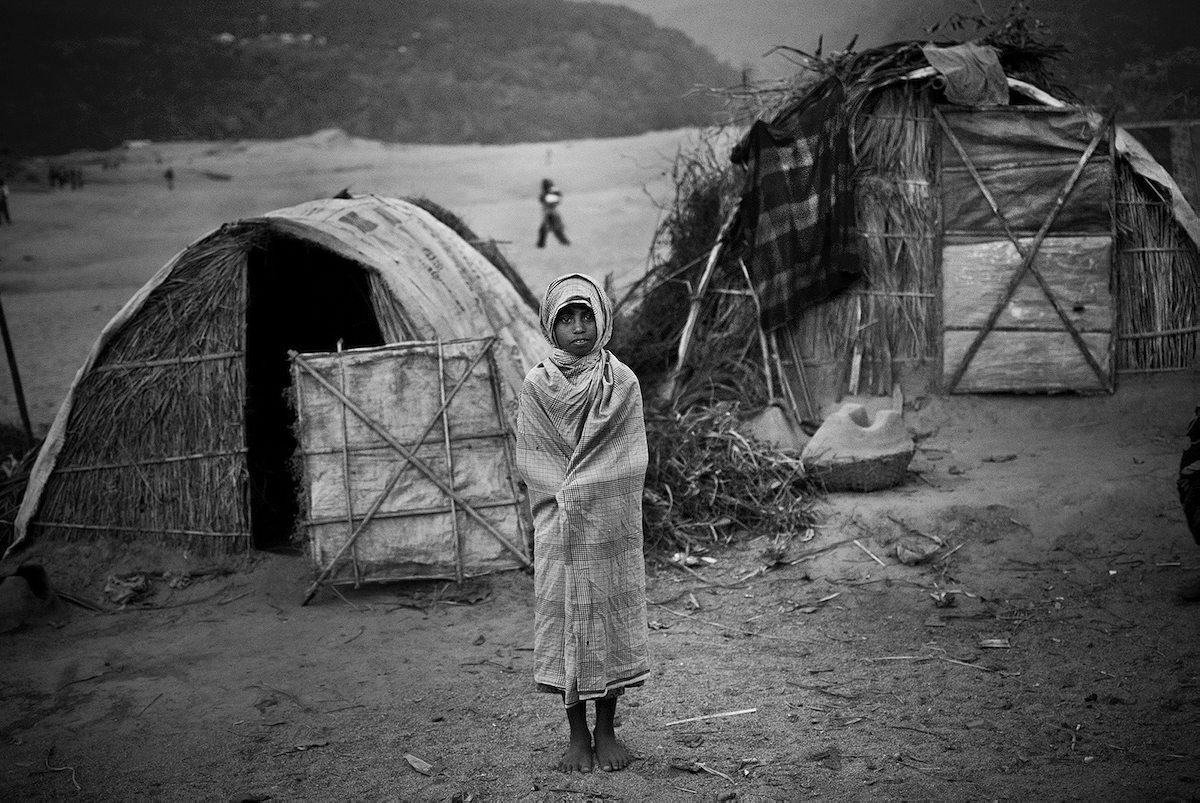
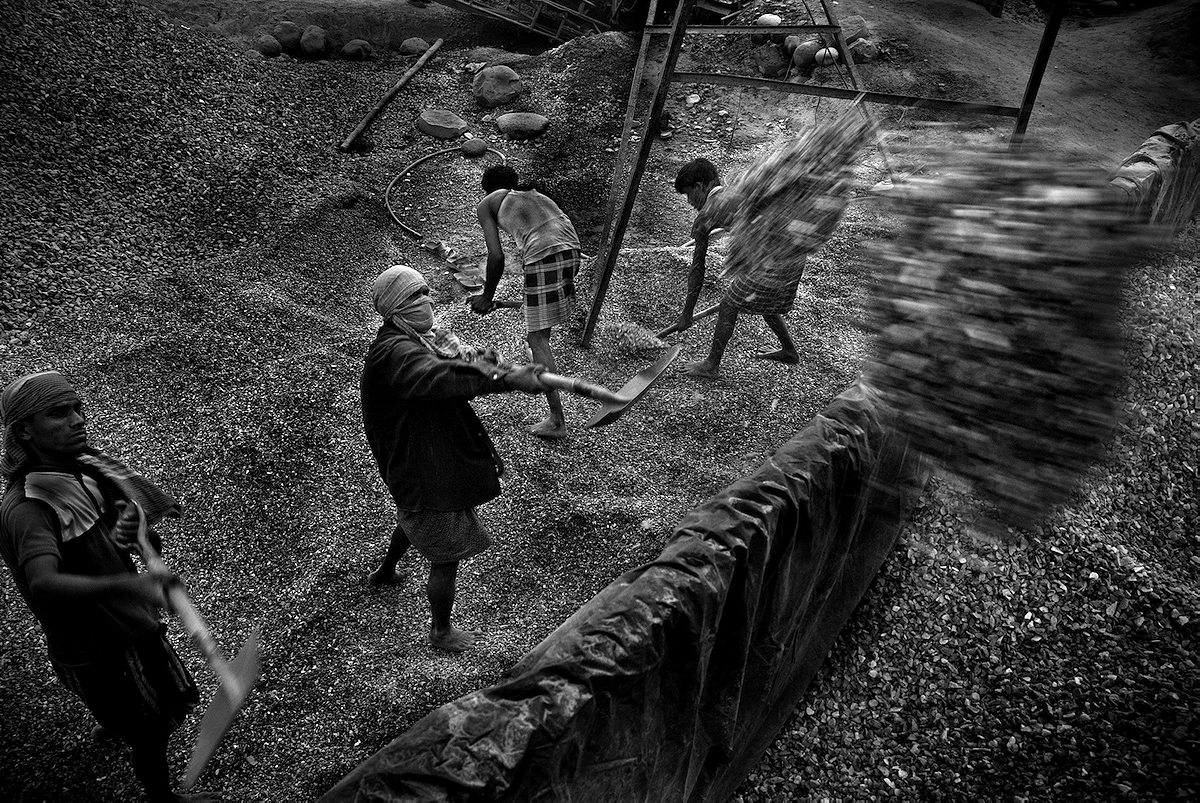

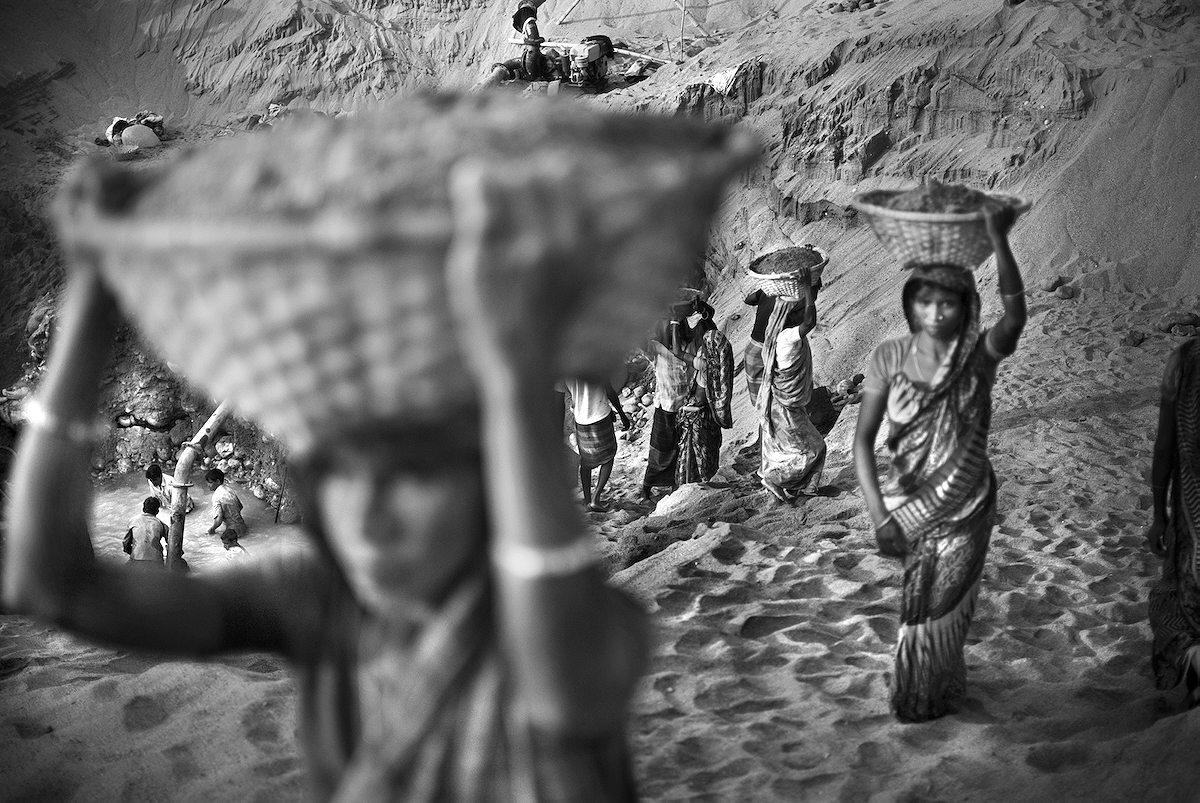



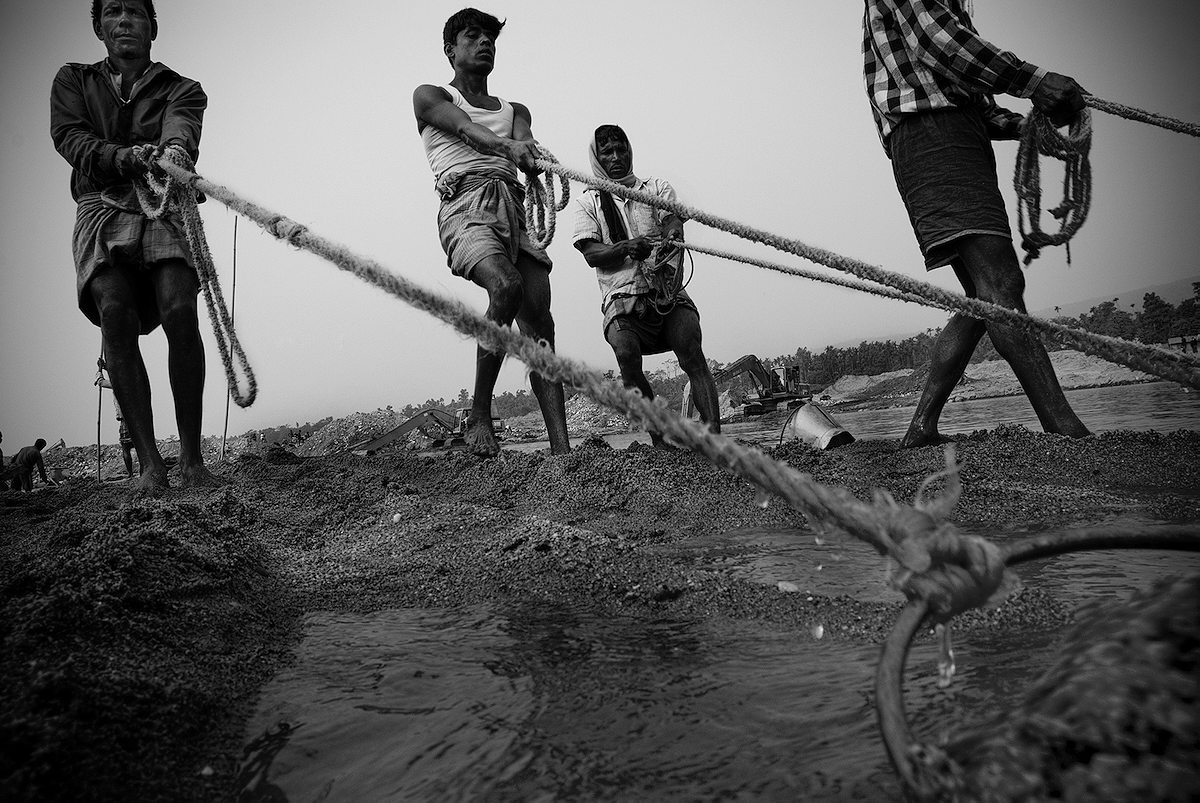


Top image: A boy collects stones. He can earn 5 taka ($0.07) for a bucket of stone chips. Photo by: Khaled Hasan.